|
|
|||||||||
|
|
||||||||||||||||||||||||||||
|
|
|
|
|
Possibly a Winkler / Auge personality clash was not the main issue which led to the split? In 1977 Data Cash Systems Inc. had released their chess computer CompuChess. This was just months after Fidelity’s pioneering Chess Challenger. The Novag Chess Champion Mk I was released late in 1978. It was sold in the USA by a company called JS&A, and was known there as the JS&A Chess Computer. Early in 1979 Data Cash Systems took legal action against JS&A for breach of copyright (links to ->case notes and ->appeal notes). It transpired that the ROM in the JS&A (below) and therefore in the Novag Chess Champion Mk I was identical to the ROM in CompuChess. The legal action failed because it transpired that the copyright had not been adequately protected in terms of USA law, which had not yet developed in the area of computer program copyright protection. |
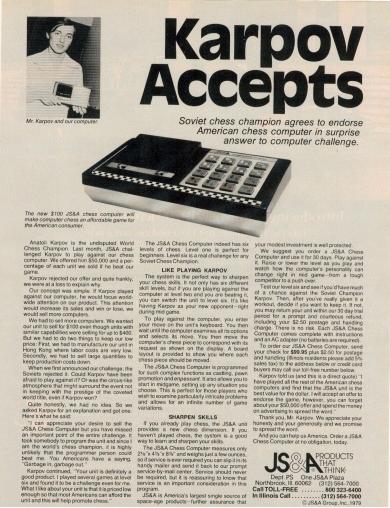 |
|||||
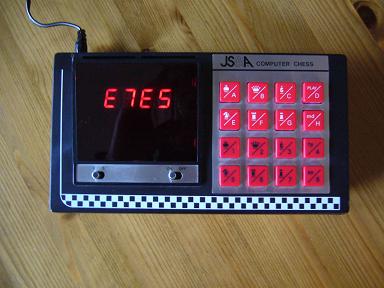 |
|||||
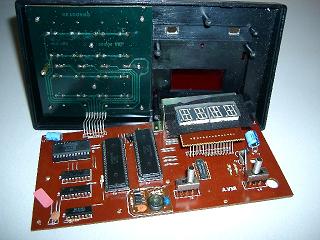 |
|||||
|
You can find the story of how Karpov came to endorse the Novag Chess Champion Mk I in “The Adweek Copywriting Handbook” by Joseph Sugarman of JS&A (link see Pages 72-74). One can speculate that these sales methods, the court case, and the quest for programs for their chess computers may have produced stresses in the partnership between Auge and Winkler? Some sources suggest that the CompuChess program (and therefore the first Novag program) which is attributed to David B Goodrich & Associates, may have been partly developed by David Levy? With programmers Mark Taylor, Mike Johnson and others it was Levy who later went on to produce a number of programs for SciSys. The box of the next Novag, the Chess Champion Mk II, proclaims the Mk II program to be the work of Peter Jennings (well known for his Microchess program). Obviously a need was felt to make the program origin crystal clear. |
|
|
 |
|
With the Chess Partner 2000, released in December 1980, the two companies can be seen to be going further along their separate paths. Whereas the SciSys and Novag computer units are identical, the boxes are different. The Novag box as printed acknowledges the “programmer” David Levy then the acknowledgement is covered with a sticker. As far as I am aware the sticker was added to all Novag boxes, which suggests that Novag were at first proclaiming the source (and legitimacy) of their program, then distancing themselves from the now SciSys programmer. The CompuChess appeal against the court’s copyright decision had recently been decided. The pictures below show the boxes, including the Novag version with the sticker in place and with the sticker removed by me. By this time both companies had located to the Admiralty Centre in the Hong Kong central business district. |
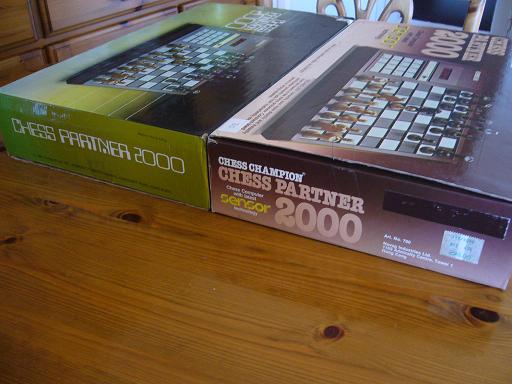 |
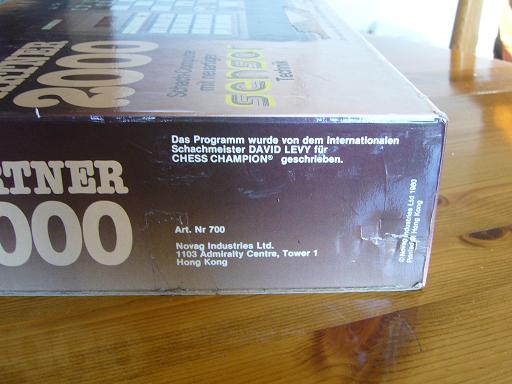 |
 |
|
|
||||||||||||||||||||||||||||||||||||||||||||||||||||
|
Novag followed a completely separate path from SciSys in 1981. Peter Auge hired American programmer David Kittinger and it was his Mychess program which went into the Novag Microchess, Super Sensor IV and Savant, all released that year. The emphasis was on innovation, perhaps partly because of direct competition and rivalry with SciSys. The Savant was years ahead of its time using an LCD chessboard with touch screen technology. Later the marvellous Novag Robot Adversary appeared after prolonged prototype problems. Auge must have learnt some harsh lessons trying to turn the innovative Robot Adversary and Savant into reliable consumer products. History shows that he failed in this and, possibly with the exception of the Super Constellation, Novag has barely released a “state of the art” chess computer in the twenty five years since. Perhaps it is this conservatism, which Novag and SciSys/Saitek have shared since the early 1980s, which helped their survival, whilst others failed. Novag did have one other advantage. Thanks to Gabrielle Auge, Novag excelled at that time with its build quality, appearance and the packaging of its products. Sales went particularly well in Germany, France, and some other European countries too. However Novag sold relatively few chess computers in the UK until 1983, when Paul Cohen of Eureka Electronics acquired the distribution rights. |
|
|
|
|
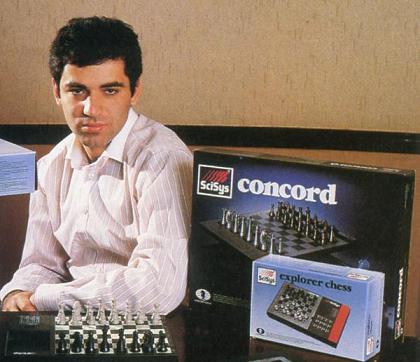 |
|||||||||
|
In December 1983 SciSys achieved a major coup by signing Garry Kasparov to endorse SciSys products and to appear in advertisements. The deal was made when Kasparov was in London to play Viktor Korchnoi in the World Championship semi-final. Kasparov also agreed to collaborate in production of an openings module. The Kasparov Selected Openings module for the Superstar 36K and Turbostar 432 was released in 1985. Luckily for SciSys Kasparov became the youngest ever World Chess Champion in November 1985 when, at the age of 22, he defeated Anatoly Karpov. The connection between SciSys and Garry Kasparov was strengthened to the extent that all SciSys chess computers carried the Kasparov name from late 1985 onwards. |
|||||||||
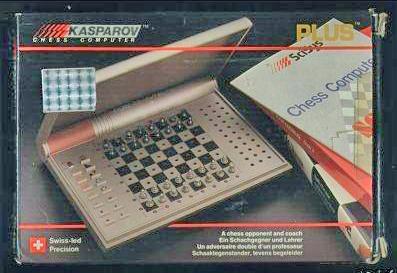 |
|||||||||
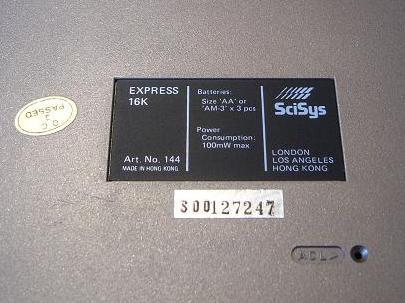 |
|||||||||
 |
|||||||||
|
|
|
|
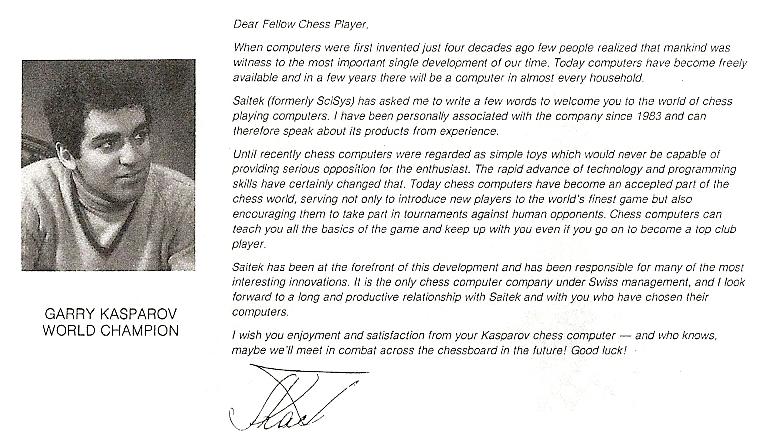 |
|
From then on the SciSys name is seen less and less on newly released chess computers and that is where this particular story ends. |
|
Go to my SciSys 1979-1986 webpage for pictures and a complete list of all SciSys chess computers. |
|
Postscript |
|||